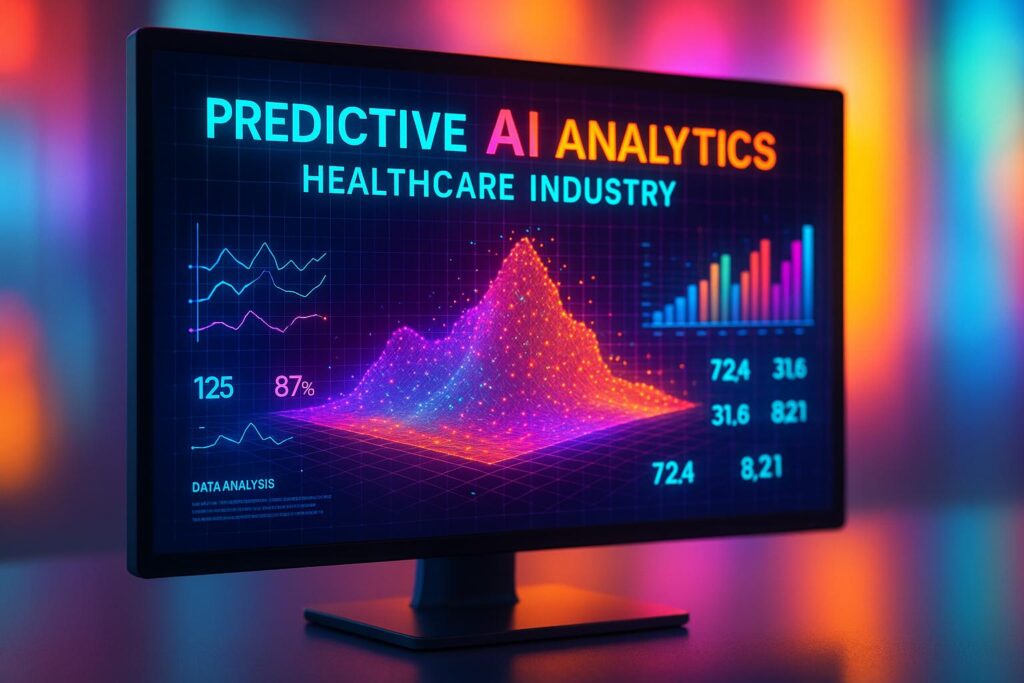Listen to the article
Innovative AI-driven predictive analytics are revolutionising the US healthcare system by enabling early risk detection, personalised interventions, and significant cost savings, transforming the future of patient-centred, value-based care.
AI-driven predictive analytics is radically transforming value-based care in the U.S. healthcare system by providing unprecedented capabilities in early risk identification and cost optimisation. Traditionally, healthcare providers relied on retrospective yearly reports to analyse data on hospital readmissions and emergency room visits, which only helped diagnose and treat patients after conditions had worsened. This reactive approach often led to increased costs and suboptimal outcomes. Today, AI technologies harness vast and varied datasets—including medical, pharmacy, dental records, wearable device data, social determinants of health, and medication adherence information—to predict health risks before they escalate, enabling proactive, personalised care interventions aligned with value-based care goals.
A core strength of AI predictive analytics is its ability to detect early warning signs of chronic and complex diseases such as diabetes, cardiovascular conditions, cancer, and neurological disorders. Advanced deep learning algorithms, for example, can distil vast coding systems—with hundreds of thousands of medical codes—down to the most relevant features, uncovering subtle health changes often missed during routine examinations. Beyond clinical data, AI evaluates social factors such as patient income, living conditions, and medication compliance to provide a comprehensive risk profile. Companies like Certilytics exemplify this approach by integrating diverse datasets to assist healthcare leaders in identifying at-risk populations earlier, which is particularly critical as the U.S. faces increasing care demands from its growing elderly population.
Cost reduction forms another significant advantage of AI-based predictive analytics. U.S. healthcare expenditures surpass $3.3 trillion annually, a large portion driven by long-term disease management and preventable hospital visits. By anticipating high-risk patients, providers can intervene earlier to prevent costly emergency admissions and readmissions for conditions like heart failure and diabetes. For instance, UnityPoint Health reportedly achieved a 40% reduction in readmissions through AI prediction models, while Sentara Health’s remote patient monitoring collaboration decreased hospital utilisation for patients with uncontrolled hypertension. AI also optimises hospital operations, from predicting necessary equipment maintenance to scheduling staff more efficiently in response to patient flow. Companies such as Veritis have successfully implemented AI to decrease emergency room wait times, enhancing both cost efficiency and patient experience.
The integration of multiple data sources amplifies the power of AI in value-based care. Combining electronic health records (EHRs), wearable technology, genetic information, and social determinants enables a holistic view of patient health. Remote Patient Monitoring (RPM) platforms, like that provided by HealthSnap, enable real-time tracking of vital signs and medication adherence, feeding continuous data into AI systems for ongoing risk assessment and early intervention. Interoperability standards such as SMART on FHIR facilitate seamless data exchange across the many health IT systems used by providers, ensuring AI insights are accessible and actionable for care teams.
Medication non-adherence poses a persistent challenge, contributing to worsening health outcomes and higher costs. AI helps address this through behavioural analytics and culturally tailored chatbots that remind and engage patients to follow prescribed regimens. Such tools have been shown to improve adherence rates, thus reducing avoidable hospital visits and reinforcing preventive care models.
Beyond clinical applications, AI streamlines administrative workflows by automating tasks including appointment scheduling, patient communication, billing, and clinical documentation. Tools like SimboConnect reduce staff workload and cut patient wait times, while AI-driven transcription services from companies like Abridge can reduce physician charting time by up to 74%, freeing clinicians to focus more on patient care. AI also supports IT infrastructure management by predicting equipment failures and optimising supply chains.
Despite these benefits, widespread adoption of AI in value-based care remains limited. Surveys reveal that about 75% of medical groups have yet to incorporate advanced analytics or AI tools into their care models, reflecting barriers such as integration challenges with legacy IT, data privacy concerns under regulations like HIPAA and GDPR, and the need for targeted staff training. Healthcare providers are encouraged to start with focused pilot projects addressing high-impact areas like chronic disease management or emergency care to demonstrate value and build confidence in AI solutions.
Looking ahead, AI predictive analytics is expected to become increasingly sophisticated, integrating real-time data streams and working in tandem with telemedicine and AI-powered virtual assistants to offer continuous, accessible patient support. Market projections estimate the global healthcare predictive analytics sector could exceed $154 billion by 2034, underscoring its transformative potential. To capitalise on these advances, healthcare leaders must prioritise investments in user-friendly, compliant AI systems with strong data-sharing capabilities, enabling them to meet the evolving demands of value-based care effectively.
In summary, AI-driven predictive analytics, when combined with workflow automation and comprehensive data integration, equips U.S. healthcare providers to detect patient risks early, tailor interventions precisely, and optimise costs. As healthcare complexity grows, these technologies are becoming indispensable in delivering efficient, patient-centred care aimed at improving health outcomes and financial sustainability.
Reference Map:
- Paragraph 1 – [1], [4]
- Paragraph 2 – [1], [4], [6]
- Paragraph 3 – [1], [2], [7]
- Paragraph 4 – [1], [4], [6], [2]
- Paragraph 5 – [1], [2], [4]
- Paragraph 6 – [1]
- Paragraph 7 – [1], [3]
- Paragraph 8 – [1], [2], [4], [6]
Source: Fuse Wire Services


